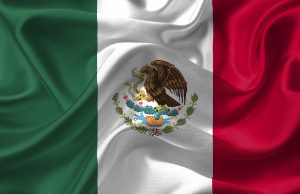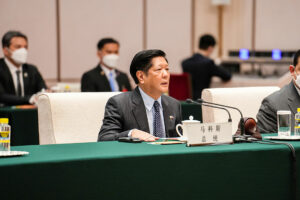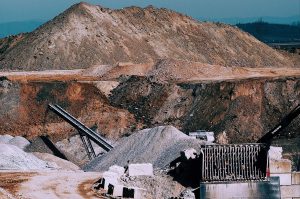Benchmark rate may reach 6.75% this year — Nomura

By Keisha B. Ta-asan, Reporter
ELEVATED CORE INFLATION may likely prompt the Philippine central bank to hike its policy rate to as high as 6.75% this year.
In a report dated March 10, Nomura Global Markets Research raised its consumer price index (CPI) forecast for the Philippines this year to 5.8% from 5.6% previously due to persistently high core inflation in the first two months of the year.
This is lower than the Bangko Sentral ng Pilipinas’ (BSP) full-year forecast of 6.1% for 2023, but still above the 2-4% target range.
The projections are contained in a note, “Philippines: Higher inflation for longer” written by Nomura Chief ASEAN (Association of Southeast Asian Nations) Economist Euben Paracuelles and analyst Rangga Cipta.
Headline inflation slowed to 8.6% in February, from the 14-year high 8.7% in January, data from the statistics agency showed.
However, core inflation, which excludes volatile prices of food and fuel, quickened to 7.8% in February from 7.4% in January. This is the quickest rise in core inflation in over 22 years.
“Core inflation is still climbing due to more persistent second-round effects. This, and a still-large current account deficit, suggests more policy rate hikes are on the cards,” Nomura said.
Based on data from the BSP, the current account deficit stood at $5.8 billion in the third quarter of 2022, widening from the $974-million gap seen the year prior.
Given the new inflation forecast and with expectations of further tightening by the US Federal Reserve, Nomura sees BSP hiking policy rates by 25 basis points (bps) each at its next meetings until June, bringing the key rate to peak at 6.75%.
The Monetary Board is scheduled to meet on March 23, May 18, and June 22.
“Beyond that, we still expect BSP to reverse course and start cutting its policy rate, but only from March 2024, in line with our Fed call,” Nomura said.
Since May 2022, the Monetary Board has hiked policy rates by 400 bps, including its recent 50-bp hike last month. This brought the benchmark rate to 6%, the highest in nearly 16 years.
Nomura also expects the fed funds rate to reach 5.5-5.75% by June, 75 bps higher than its previous forecast of 4.75-5%.
The US Federal Reserve raised the fed funds rate by 25 bps to 4.5-4.75% last month. It has hiked rates by a total of 450 bps since March 2022. The Fed’s next policy review will be on March 21 and 22.
Security Bank Corp. Chief Economist Robert Dan J. Roces said the country should continue to watch out for persistently high core inflation.
“The implication of a still-rising core inflation and slowing headline inflation is that policy makers may need to carefully monitor and address the underlying inflationary pressures in the economy, rather than relying solely on headline inflation measures. This could include adjusting monetary policy or implementing other measures aimed at reducing inflationary pressures in the economy,” he said.
Inflationary pressures include rising labor costs, higher prices of raw material and commodities, transport fare hikes, supply chain disruptions, and stronger demand for goods and services, Mr. Roces said.
He said fiscal policies such as government spending, tax policies, and regulations can also contribute to underlying inflationary pressures.
To manage these second-round effects, Mr. Roces said the Monetary Board is likely to continue its tightening cycle, but only by 25 bps more on March 23 before pausing.
“We expect a 25-bp hike by the Monetary Board at its next meeting on March 23. This shall bring the policy rate to 6.25% followed by a possible pause should disinflation begin with base effects kicking in and the foreign exchange market relatively confined to a range,” Mr. Roces said.
“Moreover, the headline rate gives the central bank some leeway to scale back its aggressive tightening policies, which have seen borrowing costs increase by 400 basis points since May last year,” he said, adding that non-monetary measures may help temper inflation in the coming months.
ECONOMIC OUTLOOKMeanwhile, Nomura kept its 5.5% gross domestic product (GDP) forecast for the Philippines this year, slower than the 7.6% growth in 2022 as household spending is expected to slow amid high inflation and fading pent-up demand.
However, it hiked its projection for the Philippines’ budget gap this year to 6.6% of GDP, from its previous estimate of 6.1%. Still, this is narrower than the fiscal deficit outturn of 7.3% of GDP last year.
“We think revenues will underperform this year, given our nominal GDP growth forecast is lower than in the medium-term fiscal framework. Importantly, we think expenditures will hold up, led by capital outlays under the ‘build back more’ infrastructure program,” Nomura said.
Data from the Bureau of the Treasury showed the full-year deficit in 2022 was lower by 3.35% or P56 billion than the P1.67-trillion shortfall in 2021 as revenue growth of 17.97% outpaced the 10.35% expansion in government spending.
The government aims to reduce the deficit to 6.1% of GDP this year.




